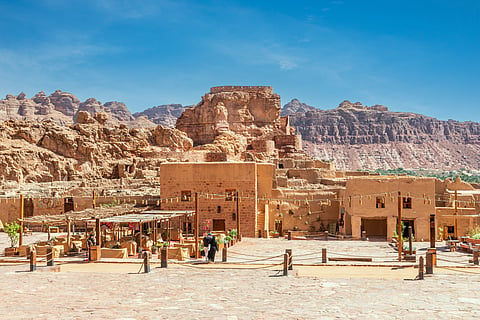
- Destinations
- Experiences
- Stay
- What's new
- Celebrating People
- Responsible Tourism
- CampaignsCampaigns
- Subscribe
- Buy Now

Saudi Arabia has a rich trade history, particularly along the Incense and Silk Routes, which connected the Arabian Peninsula to the Mediterranean world and the East. These routes facilitated the exchange of goods such as frankincense, spices, silk, and other luxury items.
The Incense Route, one of the world's oldest trade routes, stretched over 2,000 km and connected Southern Arabia and Northeast Africa with the Mediterranean. The route was primarily used to transport frankincense and myrrh, resins from trees that grew only in Southern Arabia and Northeast Africa.
These resins were highly valued in the Mediterranean, particularly for religious ceremonies and perfumes. The Incense Route primarily ran parallel to the Red Sea along the west coast of Saudi Arabia. This route included cities like AlUla, a Lihyanite-Arab town, and Nabatean cities in the Naqab.
The Nabateans, skilled in navigating the desert, played a key role in this trade, controlling the flow of goods and building prosperous relationships with merchants. Their wealth funded monumental projects, including Hegra, a UNESCO World Heritage Site known for its stunning sandstone structures.
Hegra was the kingdom's second capital after Petra and features over 100 well-preserved tombs carved into cliffs, adorned with intricate Nabataean funerary symbols. These tombs reflect a blend of cultural influences, showcasing the vibrant exchanges characteristic of the region's bustling trade routes.
The Silk Route, a network of trade routes, connected China with the Arabian Peninsula and beyond by land and sea. Chinese silk was a major commodity traded along the Silk Route, alongside incense, frankincense, and pearls. The Arabian Peninsula was a key hub for the Silk Route, with important ports on the Red Sea and the Persian Gulf.
The Silk Route was a major trade route for a significant period in history, with cities like Jeddah in Saudi Arabia serving as hubs. The maritime Silk Road, which connected China, Southeast Asia, the Indian subcontinent, and the Arabian Peninsula, flourished during this time. Modern trade agreements between Saudi Arabia and China have helped revive these ancient trade routes.
The Arabian Peninsula is strategically located at the intersection of the Red Sea, Persian Gulf, and Arabian Sea, which facilitated trade across the Indian Ocean. During the Muslim period, Arab merchants played a crucial role in this trade, using dhows to navigate the ocean and connecting various regions.
